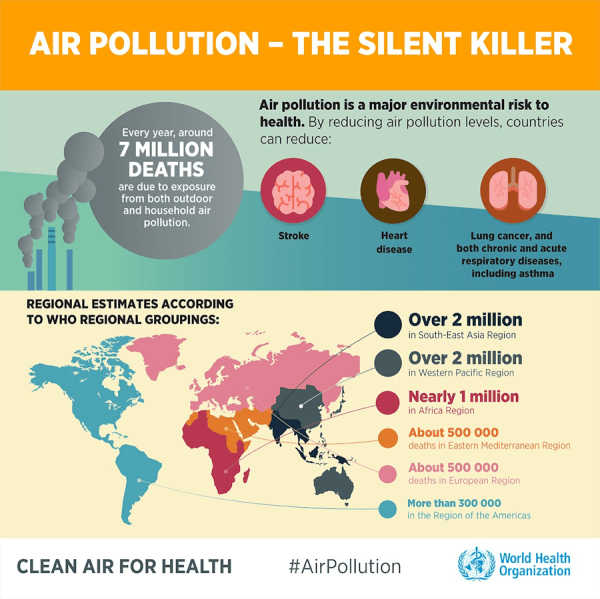An unintended consequence of the Covid-19 pandemic was that people trapped indoors for long periods of time became increasingly interested in the quality of the air they breathe. For good reason. According to a World Health Organization (WHO) report issued late last year, toxic indoor air was traced to more than three million deaths in 2020 caused by cardiac arrest, pulmonary disease, stroke and lung cancer. While the problem disproportionately affects poor countries with insufficient access to clean cooking fuels, it is prevalent in more affluent economies in the form of volatile organic compounds (VOCs), carbon monoxide, nitrogen oxides, ozone and formaldehyde to name just a few.
Interest in this global health crisis has been growing steadily in recent years to the point where environmental air sensors are among the fastest-growing vertical segments of the semiconductor market across residential, municipal, commercial, and industrial applications. Renesas Electronics launched a significant R&D program in 2014 that is now bearing fruit in the form of multiple sensor modalities that detect a range of compounds to provide homeowners, building managers, and factory floor operators with the actionable intelligence they can use to inform remediation efforts.
Budding interest in managing indoor (and outdoor) air quality has revealed a significant challenge, however. We are in what I call the Wild West era of environmental sensing in that standards are popping up across the global landscape but with no single, cohesive body working toward a common blueprint.
That is beginning to change, with two significant air quality developments this month alone. The first was updated guidance from the Centers for Disease Control and Prevention (CDC) that sets improved ventilation targets to help prevent respiratory illnesses from spreading in indoor spaces. The second was a set of draft requirements for HVAC systems issued by the American Society of Heating, Refrigerating and Air-Conditioning Engineers (ASHRAE) for reducing indoor, airborne viral transmissions, including Covid-19 and influenza.
For our part, Renesas collaborates around the world with numerous agencies dedicated to detecting and improving air quality. These include RESET, a Shanghai-based international organization that promotes data collection and continuous monitoring for buildings through standardization; UBA, Germany's central environmental authority dedicated to early detection of environmental risks and threats; as well as various industry-standards bodies in the U.S. We also address our efforts in this area as part of the recently released Renesas 2022 Sustainability Report.
An AI-based Approach to System-Level Air Quality Detection
As technology providers, policymakers and industry organizations coalesce around a shared set of air quality criteria, Renesas is leveraging its nearly 10 years of research to equip customers with a set of flexible, configurable digital gas sensing systems that enable them to measure air quality independent of a universal standard. These new and emerging systems combine a MEMS-based analog sensor with a microcontroller and communications stack to detect, interpret and share real-time air quality data.
Our artificial intelligence (AI) algorithms and hardware and firmware platforms allow customers to easily comply with various building air quality standards. And new developments through our acquisition of Reality AI are taking this to a higher level, focused on sensor fusion of complete systems. Schools and other public buildings around the world, for example, are beginning to bring air quality metrics online. Using our embedded AI algorithms, a school in China can use the same hardware as one in the U.S. or Europe and simply update the AI-enabled firmware for their particular needs regardless of country.
At the same time, the sensor systems use AI to distinguish between different types of gas and organic compounds, predict when HVAC filters must be replaced and incorporate a bank of embedded “compensation engines” that autonomously adjust for changes in the environment, such as temperature, humidity, and untargeted interferent gases that can have a dramatic effect on indoor air quality measurements. Moreover, these sensors can be incorporated into a “system of systems” that customers can distribute across large indoor installations, including HVAC systems, thermostats, smart appliances and smoke detectors.
In short, our approach to air quality sensing obviates the need for customers to source, prototype, test, validate, build and calibrate at the component level and frees them up to further differentiate their products. As public funds for air quality standards become available – and until indoor air quality standards mature – we renew our commitment to making our customers' lives easier, perhaps nowhere more importantly than by protecting the health of people around the world at work, home and play.

